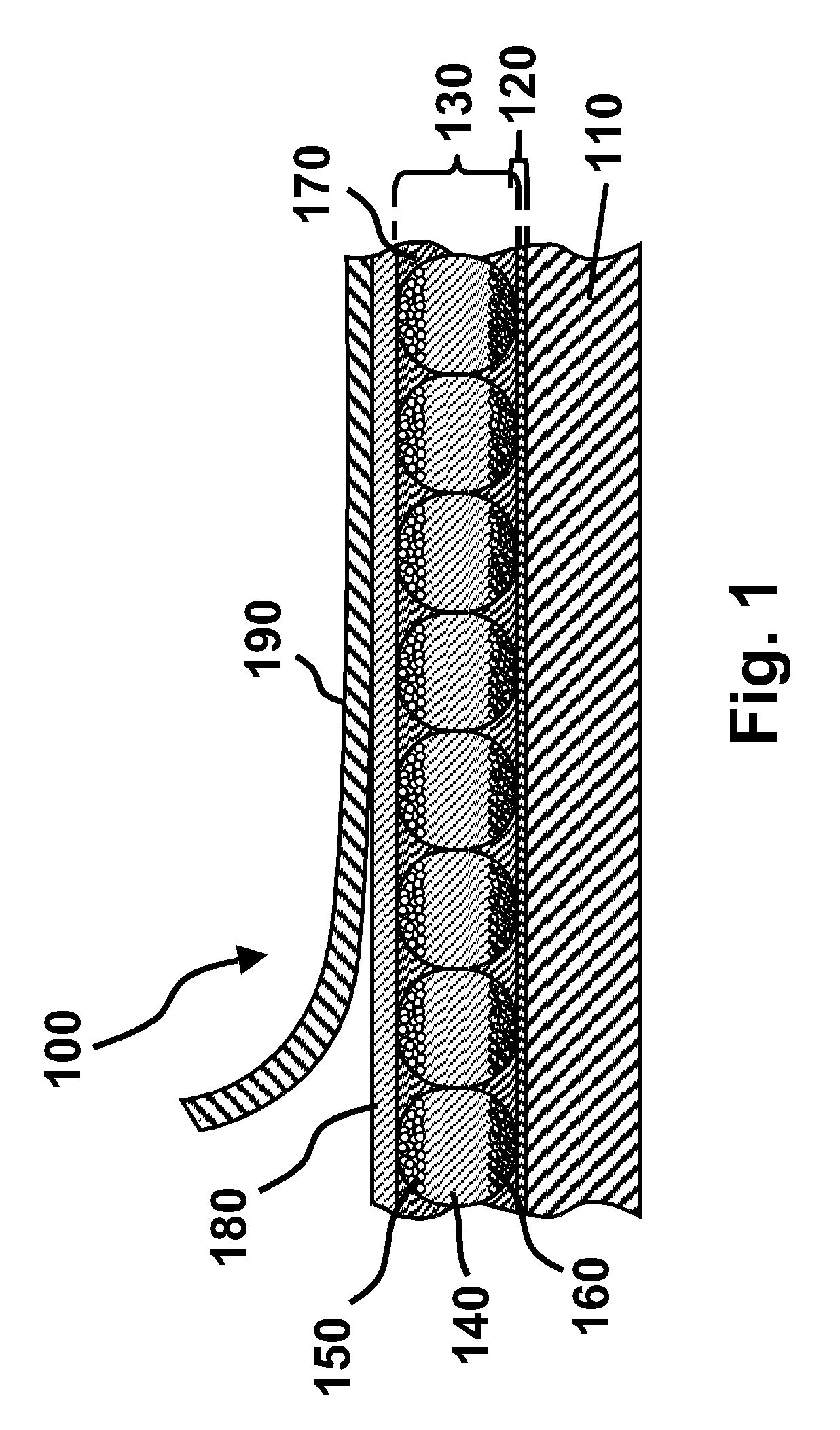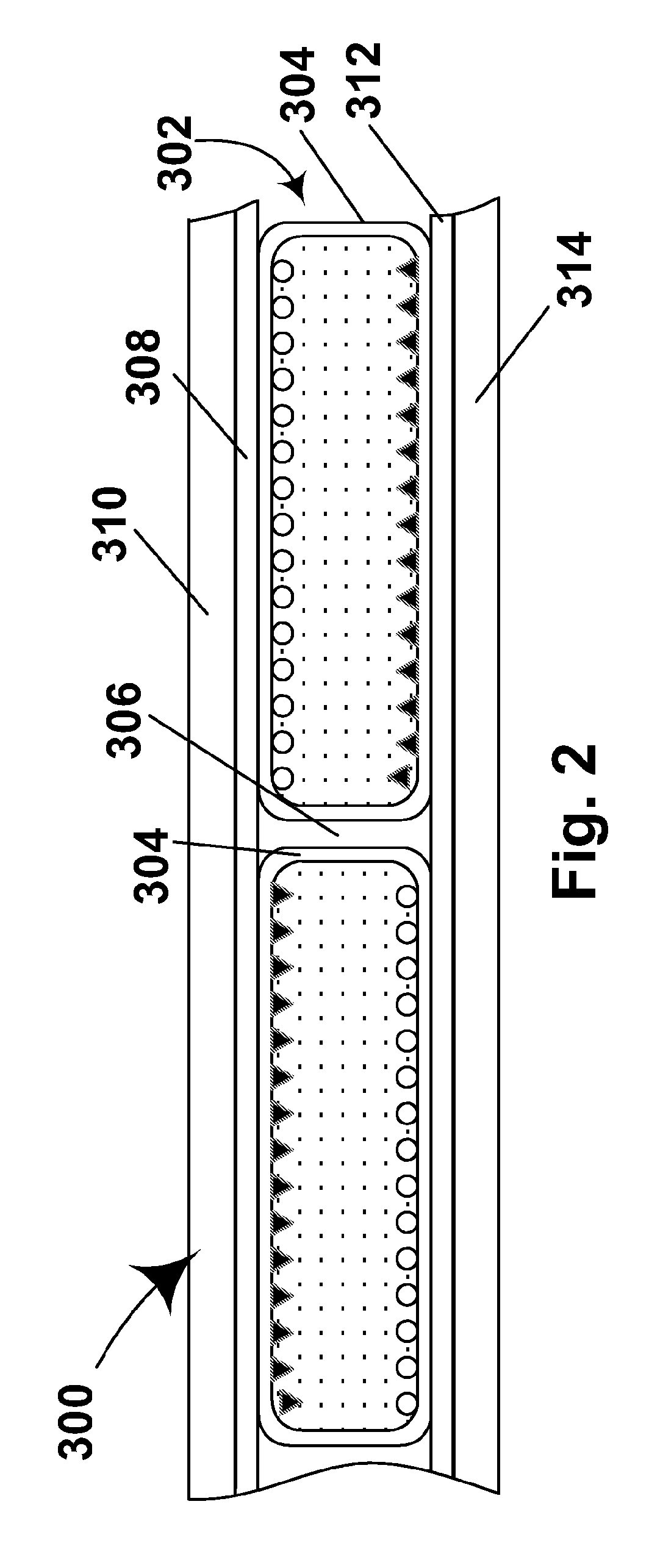Electro-optic display and materials for use therein
a technology applied in the field of optical display and materials, can solve the problems of inadequate service life of optical display, unable to meet the needs of the user, and gas-based electrophoretic media are susceptible to the same types of problems, so as to achieve the effect of increasing the viscosity of the matrix and preventing widespread us
- Summary
- Abstract
- Description
- Claims
- Application Information
AI Technical Summary
Benefits of technology
Problems solved by technology
Method used
Image
Examples
example 1
[0242]This Example describes the preparation of a display of the present invention using a gelatin / acacia microencapsulated electrophoretic medium.
[0243]A Preparation of Oil (Internal) Phase
[0244]To a 1 L flask is added 0.5 g of Oil Blue N (Aldrich, Milwaukee, Wis.), 0.5 g of Sudan Red 7B (Aldrich), 417.25 g of Halogenated hydrocarbon Oil 0.8 (Halogenated Hydrocarbon Products Corp., River Edge, N.J.), and 73.67 g of Isopar-G (Exxon, Houston, Tex.—“ISOPAR” is a Registered Trade Mark). The mixture is stirred at 60° C. for six hours and is then cooled to room temperature. 50.13 g of the resulting solution is placed in a 50 mL polypropylene centrifuge tube, to which is added 1.8 g of titanium dioxide (TiO2) (E. I. du Pont de Nemours & Company, Wilmington, Del.), 0.78 g of a 10% solution of OLOA 1200 (Chevron, Somerset, N.J.), in Halogenated hydrocarbon Oil 0.8, and 0.15 g of Span 85 (Aldrich). This mixture is then sonicated for five minutes at power 9 in an Aquasonic Model 75 D sonicato...
example 2
[0283]This Example illustrates the improved stability of the volume resistivity of the aforementioned R 9320 upon prolonged storage provided by blending the material with the aforementioned U KA 8713.
[0284]Test samples, using pure R 9320 and U KA 8713, and 90 / 10, 75 / 25 and 50 / 50 w / w per cent blends of these two materials, were prepared in the following manner. The blend, adjusted to 40 % solids content, was coated, using a doctor blade set at 150 μm, on to a 5 mil (127 μm) sheet of ITO-coated polyester masked on one edge, so that the masked area could later serve as an electrode. The resultant coating was dried in an oven at 50° C., for 20 minutes to produce a dry film approximately 60 μm thick. The resultant adhesive-coated film was then laminated, by vacuum or roll lamination, to a second sheet of ITO-coated polyester so that the adhesive was in contact with both ITO layers. The samples thus prepared were stored at ambient temperature and humidity for 2500 hours. The electrical pr...
example 3
[0286]This Example illustrates the improved stability of the volume resistivity and dielectric constant of the aforementioned R 9320 upon prolonged storage provided by blending the material with the aforementioned R 9000.
[0287]Example 2 was repeated, except that R 9000 was substituted for U KA 8713, that the storage period was 4000 hours, and that the volume resistivity measurements were supplemented by measurements of the dielectric constant of the blends using the same impedance spectrometer as previously mentioned. The volume resistivity results are shown in FIG. 6 of the accompanying drawings and the dielectric constant results in FIG. 7.
[0288]From FIG. 6, it will be seen that, although the volume resistivities of both R 9320 and R 9000 underwent substantial changes over the test period, the blends had much more stable resistivities. In particular, the performance of the 50 / 50 w / w blend was outstanding, displaying a variation by less than a factor of 2 throughout the storage per...
PUM
| Property | Measurement | Unit |
|---|---|---|
| enthalpy | aaaaa | aaaaa |
| dielectric constant | aaaaa | aaaaa |
| volume resistivity | aaaaa | aaaaa |
Abstract
Description
Claims
Application Information
 Login to View More
Login to View More - R&D
- Intellectual Property
- Life Sciences
- Materials
- Tech Scout
- Unparalleled Data Quality
- Higher Quality Content
- 60% Fewer Hallucinations
Browse by: Latest US Patents, China's latest patents, Technical Efficacy Thesaurus, Application Domain, Technology Topic, Popular Technical Reports.
© 2025 PatSnap. All rights reserved.Legal|Privacy policy|Modern Slavery Act Transparency Statement|Sitemap|About US| Contact US: help@patsnap.com



